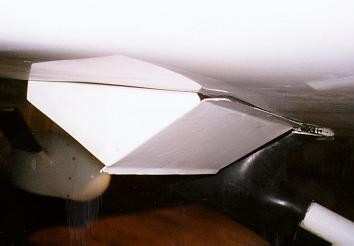Wed, Aug 02, 2006
Aero-Tips!
A good pilot is always learning -- how many times have you heard
this old standard throughout your flying career? There is no truer
statement in all of flying (well, with the possible exception of
"there are no old, bold pilots.")

Aero-News has called upon the expertise of Thomas P. Turner,
master CFI and all-around-good-guy, to bring our readers -- and us
-- daily tips to improve our skills as aviators. Some of them, you
may have heard before... but for each of us, there will also be
something we might never have considered before, or something that
didn't "stick" the way it should have the first time we memorized
it for the practical test.
Look for our daily Aero-Tips segments, coming each day to you
through the Aero-News Network.
Aero-Tips 08.02.06 (5) red
underline -- headers 5 regular
One of the most critical components to engine temperature
management, and one of the most commonly forgotten items in
high-performance engine operation, is the cowl flaps. Cowl flaps
can profoundly affect long-term health and longevity of a
high-performance airplane engine - making it even less likely to
reach the factory recommended Time Before Overhaul (TBO).

Cowl flaps are movable extensions of (usually) the lower engine
cowling that open or close to deflect the slipstream. When open,
cowl flaps deflect the slipstream and create an area of low air
pressure below the engine compartment. This draws air through the
cowling air inlets and across the cylinders, helping dissipate the
heat of combustion. It's especially important that cowl flaps
be open during high power operation at low forward airspeed-such as
takeoff and climb. In cruise closed cowl flaps create a smaller low
pressure area, but one still adequate for cooling at high indicated
air speeds.
Note: Open cowl flaps in cruise increase
airflow through the engine compartment, which also increases
"cooling drag" (increasing at the cube of the indicated airspeed).
In many models, leaving the cowl flaps open in cruise may cost five
knots or more in top-end airspeed.
Here's an easy mnemonic for remembering cowl flap use:
- C is for Checklists: Use printed
checklists -- start-up, climb, cruise, descent and after
landing.
- O is for Open cowl flaps for start-up,
taxi, run-up, takeoff, climb and for taxi-in after your clear the
runway.
- W is for Watch cylinder and oil
temperatures and close the cowl flaps as the aircraft
approaches cruise speed in level flight. But if the engine is
getting abnormally hot, or you're in a configuration where it's
likely to get hotter (taxi, takeoff or climb), open the cowl
flaps.
- L is for Leave the cowl flaps closed
for descent and landing.
Aero-tip of the day: Take care of your engine
by properly using the cowl flaps.
More News
Witness Reported The Airplane Was Flying Low And Was In A Left Bank When It Struck The Power Line Analysis: The pilot was on final approach to land when the airplane collided with >[...]
How To Get A Story On Aero-TV News/Feature Programming How do I submit a story idea or lead to Aero-TV? If you would like to submit a story idea or lead, please contact Jim Campbel>[...]
From 2012 (YouTube Edition): A Segment Of The Sport Aviation World That Truly Lives "Low And Slow" Pity the life of ANN's Chief videographer, Nathan Cremisino... shoot the most exc>[...]
Aero Linx: International Business Aviation Council (IBAC) IBAC promotes the growth of business aviation, benefiting all sectors of its industry and in all regions of the world. As >[...]
Execute Missed Approach Instructions issued to a pilot making an instrument approach which means continue inbound to the missed approach point and execute the missed approach proce>[...]
 NTSB Final Report: Cozy Cub
NTSB Final Report: Cozy Cub ANN FAQ: Contributing To Aero-TV
ANN FAQ: Contributing To Aero-TV Classic Aero-TV: Seated On The Edge Of Forever -- A PPC's Bird's Eye View
Classic Aero-TV: Seated On The Edge Of Forever -- A PPC's Bird's Eye View ANN's Daily Aero-Linx (04.29.25)
ANN's Daily Aero-Linx (04.29.25) ANN's Daily Aero-Term (04.29.25): Execute Missed Approach
ANN's Daily Aero-Term (04.29.25): Execute Missed Approach




